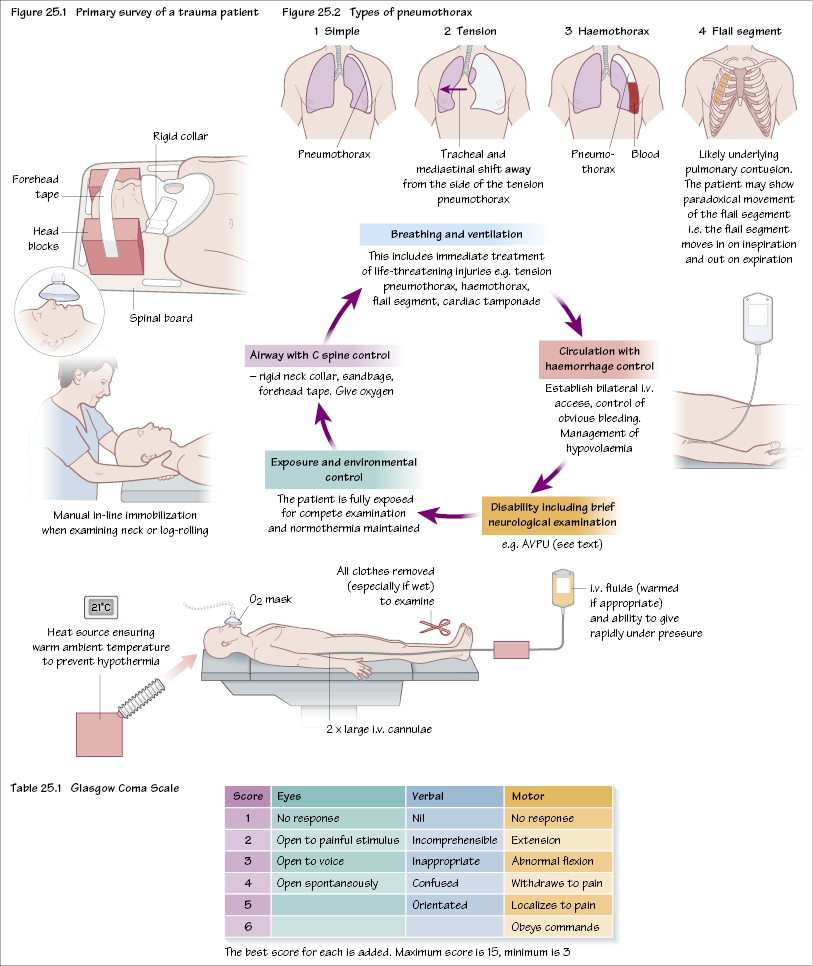25
Trauma

All patients with significant trauma should undergo standardized trauma treatment. In the UK, this is based on the Advanced Trauma Life Support (ATLS) protocol. This consists of a primary survey, in which resuscitation and identification and treatment of life-threatening injuries occurs, followed by a secondary survey, consisting of a complete head-to-toe assessment. This is followed by definitive treatment of injuries.
Primary survey
Airway plus cervical spine control
High-flow oxygen is given via a facemask. If the patient has a reduced level of consciousness, or is at risk of regurgitation, an endotracheal tube is passed into the trachea. In significant trauma, bony cervical spine injury is assumed until it can be excluded by imaging and examination. In all cases before cervical spine injury is excluded, manual in-line stabilization must be used to limit neck movement when a rigid neck collar and head blocks are not being used.
Breathing plus ventilation
Chest injuries are identified and treated (Figure 25.1). Mechanical ventilation might be needed to avoid hypoxia and hypercapnia, especially in patients with a head injury.
Circulation with haemorrhage control
Two large-bore cannulae are inserted and fluid resuscitation commenced. Blood is given if the haematocrit is <30% or haemoglobin <10 g/dL. All fluids should be warmed to limit hypothermia and potential coagulopathy. Direct pressure is applied to obvious bleeding sources. Fluids might need to be given through a rapid infusion device und/>
Stay updated, free dental videos. Join our Telegram channel

VIDEdental - Online dental courses


